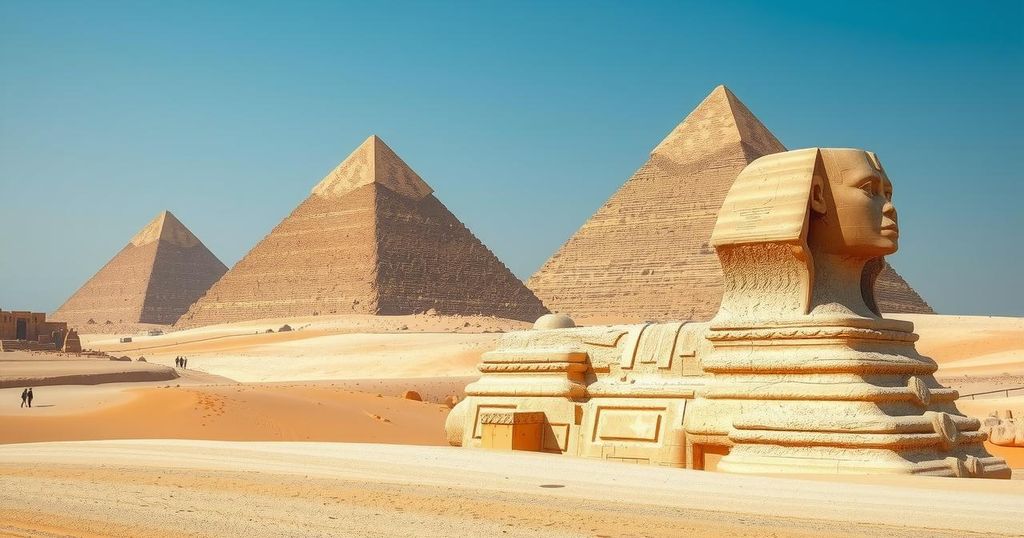Cars
AFRICA, ARCHAEOLOGY, CHRISTOPHER DUNN, CO, CORRADO MALANGA, EGYPT, ENVIRONMENTAL IMPACT, FILIPPO BIONDI, GIZA, GIZA PLATEAU, GIZA POWER PLANT, KHAFR, KHAFRE, KHAFRE PYRAMID, NEWS18, NIKOLA TESLA, POWER GRIDS, PYRAMID, PYRAMIDS OF GIZA, REESE, RESEARCH, ROMAN EMPIRE, SCIENCE, TECHNOLOGY, TESLA, UNIVERSITY OF PISA, UNIVERSITY OF STRATH, UNIVERSITY OF STRATHCLYDE
Marcus Chen
0 Comments
Underground Complex Discovered Beneath Giza Pyramids Challenges Established Beliefs
Radar scans have uncovered a vast underground network beneath the Pyramids of Giza, challenging the traditional belief of these structures serving solely as tombs for Pharaohs. Researchers discovered multiple subterranean structures connected by pathways, suggesting potential energy-related functions. The findings echo theories from historical figures regarding the pyramids’ possible uses beyond burial.
Recent advancements in radar technology have unveiled a significant underground complex beneath Egypt’s Pyramids of Giza, questioning the traditional belief that these structures only served as burial sites for Pharaohs. Researchers Corrado Malanga from the University of Pisa and Filippo Biondi from the University of Strathclyde employed Synthetic Aperture Radar (SAR) tomography to explore the Khafre Pyramid, discovering an extensive subterranean system that spans approximately two kilometers under all three pyramids.
The Khafre Pyramid, recognized as the second-largest on the Giza Plateau, revealed five identical structures adjacent to its base. These structures feature multiple levels interconnected by geometric pathways, along with eight vertical cylindrical wells surrounded by descending spirals reaching depths of 648 meters. Ultimately, these pathways converge into two massive cube-shaped entities, each measuring 80 meters per side.
This discovery, highlighted in a recent video by Reese Report, poses a challenge to the long-standing narrative that views the pyramids solely as royal tombs. Previous speculations suggest that this underground network might have served mechanical or energy-related functions, echoing theories by figures like Nikola Tesla and Christopher Dunn. Tesla believed in the pyramids’ potential to harness Earth’s natural energy, while Dunn proposed in his book, “The Giza Power Plant,” that the Great Pyramid could be a machine converting vibrations into usable energy.
Despite mainstream Egyptologists asserting that the pyramids were constructed around 2500 BCE through conventional means, the evidence of newly discovered structures alongside mathematical anomalies in the pyramids’ architecture intensifies discussions regarding their true purpose. The Khafre Project team is eager to explore further via excavation; however, gaining permission for such an endeavor remains uncertain due to Egypt’s historical restrictions on archaeological investigations that contradict official narratives regarding the pyramids.
The discovery of an expansive underground complex beneath the Pyramids of Giza opens new avenues for understanding the structures’ true purpose. While traditional views assert that the pyramids served as tombs for Pharaohs, this finding suggests they may have had alternative functions, potentially related to energy or mechanical processes. As discussions continue, gaining approval for further excavation will be critical to unveiling more truths about these ancient marvels.
Original Source: www.news18.com




Post Comment